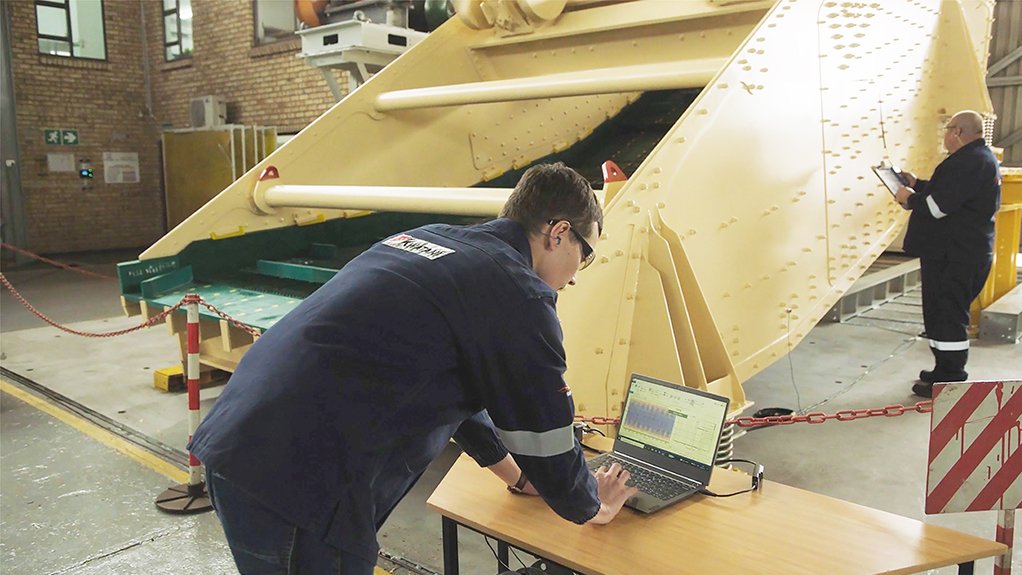The use of sensors and digital technology to provide real-time data on operating conditions of vibrating screens is said to offer valuable benefits compared to traditional paper-based systems.
Close monitoring helps keep vibrating screens productive and achieves the lowest cost of ownership and moving from paper systems to digital solutions is a vital step towards this goal, says Kwatani COO Kenny Mayhew-Ridgers.
“Where machine data recording – combined with periodic inspections and regular maintenance – can be captured in the digital sphere, you can generate a complete picture of the equipment’s lifecycle,” says Mayhew-Ridgers. “Real-time data monitoring is a game changer for screen reliability and performance.”
Sensor-generated data can quickly alert a mine to any operational deviations, allowing time to react accurately. The technology is also designed to allow patterns to be detected in the relationship between component life and throughput.
“By analysing these patterns, the mine can make well-informed decisions about its maintenance strategies, being aware of the optimal conditions for its equipment duty,” he says. “It also gives us, as original-equipment manufacturers, the opportunity to compare machine performance in detail across different customer sites – so that we can adapt and advise accordingly.”
Mayhew-Ridgers explains that Kwatani can monitor its vibrating screens using industrial sensors and measurement technology which is readily available and supported worldwide.
“What is key to the successful application of digital technology is that the raw data that we process must be analysed to become useful for decision-making and planning,” says Mayhew-Ridgers. “This means streaming it seamlessly to databases, and allowing our customers to visualise the information effectively.”
Kwatani explains that it partners with system integrators and works closely with mining customers so that the end-users get the most out of the information without spending time and money to process the raw data themselves.
Digital monitoring also enables the sharing of data across different aspects of an operation, which helps enhance transparency and improve equipment performance on a holistic basis.
“This of course requires that we integrate our systems with our customers’ existing infrastructure, which is an important focus for us,” he says. “Whether greenfield or brownfield project, it is important that information be compatible and seamlessly shared.”
He highlights that the data generated is valuable not only for reflecting a machine’s current status, but because it can store an entire life cycle history. Digital systems can keep track of the equipment’s inspections, maintenance and operational performance over its lifespan.
“The insights gained from this can lead to improvements in the design, or in the way that it is operated,” he says. “This can result in better efficiencies, improved production or other benefits.”
EMAIL THIS ARTICLE SAVE THIS ARTICLE
To subscribe email subscriptions@creamermedia.co.za or click here
To advertise email advertising@creamermedia.co.za or click here













